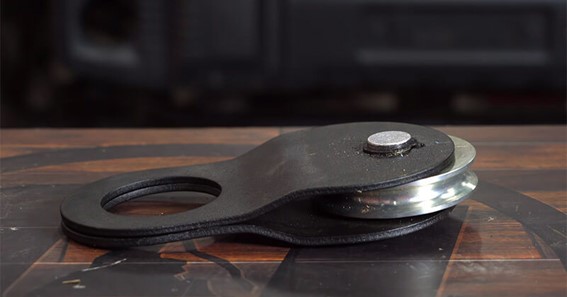Are you curious to know what is a snatch block? You have come to the right place as I am going to tell you everything about a snatch block in a very simple explanation. Without further discussion let’s begin to know what is a snatch block?
In the realm of mechanical engineering and heavy-duty applications, specialized tools play a crucial role in enhancing efficiency and achieving desired outcomes. One such tool that stands out for its versatility and effectiveness is the “snatch block.” This unassuming yet powerful device has a wide range of applications across industries, from construction and maritime to vehicle recovery and rigging. In this blog post, we’ll dive into the world of snatch blocks, exploring their functions, benefits, and the key role they play in mechanical advantage.
What Is A Snatch Block?
A snatch block, often referred to as a pulley block or block and tackle, is a simple yet ingenious mechanical tool designed to change the direction of a force and increase mechanical advantage. It consists of a grooved wheel or sheave enclosed within a housing or frame. The sheave rotates on a pin or axle and is designed to accommodate a rope or cable, allowing it to move freely.
Functions And Applications
- Change of Direction: One of the primary functions of a snatch block is to redirect the path of a rope or cable. By passing the rope through the snatch block’s sheave, the force applied can be redirected to a different angle or direction.
- Mechanical Advantage: Snatch blocks are commonly used to create mechanical advantage in lifting and pulling operations. By using multiple snatch blocks and arranging them in different configurations, users can multiply the force applied to move or lift heavy loads.
- Load Distribution: Snatch blocks help distribute the load evenly over a greater distance, reducing the strain on equipment and minimizing wear and tear on ropes or cables.
- Rigging and Recovery: In industries such as construction, maritime, and vehicle recovery, snatch blocks are essential for rigging tasks, such as lifting heavy materials, moving equipment, or recovering stuck vehicles.
- Emergency Situations: Snatch blocks play a critical role in emergency scenarios, such as vehicle recovery in off-road situations or marine rescue operations.
Benefits Of Snatch Blocks
- Increased Efficiency: Snatch blocks enable operators to achieve greater mechanical advantage, making it easier to lift or move heavy loads with less effort.
- Versatility: Snatch blocks can be used in various configurations and applications, making them a versatile tool for different industries and tasks.
- Equipment Protection: By distributing the load more evenly, snatch blocks help prevent overloading of ropes, cables, and other rigging equipment.
- Safety: Proper use of snatch blocks can enhance safety by reducing the risk of equipment failure or accidents during lifting and rigging operations.
Conclusion
The snatch block is a simple yet ingenious tool that exemplifies the principles of mechanical advantage and efficiency. Its ability to change the direction of force and multiply mechanical advantage has made it an indispensable asset in industries ranging from construction and maritime to vehicle recovery and beyond. As technology continues to advance, the snatch block remains a timeless solution for overcoming challenges and achieving optimal results in various heavy-duty applications. Whether in emergency scenarios or routine operations, the snatch block continues to play a crucial role in enhancing efficiency, safety, and success in the world of mechanical engineering.
You can collect more information about such topic on Howtat
FAQ
What Is The Difference Between A Block And A Pulley?
A block is a set of pulleys or sheaves mounted on a single frame. An assembly of blocks with a rope threaded through the pulleys is called tackle.
Why Is A Pulley Called A Block?
In case of a pulley supported by a frame or shell that does not transfer power to a shaft, but is used to guide the cable or exert a force, the supporting shell is called a block, and the pulley may be called a sheave or pulley wheel. Pulleys on a ship. In this context, pulleys are normally known as blocks.
What Are The Three 3 Types Of Pulley?
Among the pulley simple machines, there are three different types of pulleys:
- Fixed pulleys are a very common pulley. These pulleys are secured to a single spot. …
- Movable Pulleys are yet another type of pulley. …
- Compound Pulley Systems are a combination of both movable and fixed pulleys.
What Are The 4 Types Of Pulleys?
What are the 4 types of pulleys? The four types of pulleys are fixed, moveable, compound, and complex. Compound pulleys consist of a fixed and moveable pulley.
I Have Covered All The Following Queries And Topics In The Above Article
What Is A Snatch Block Used For
What Is The Point Of A Snatch Block
What Is The Purpose Of A Snatch Block
What Is The Proper Way To Use A Snatch Block
What Is A Snatch Block For A Winch
What The Hell Is A Snatch Block
What Is A Snatch Block?
What Is A Snatch Block Used For?
What Is A Snatch Block Winch
What Is A “Snatch Block” For?
What Is A “Snatch Block”?
What Is A Winch Snatch Block
What Is A Snatch Block Used Fore
What Is A ‘snatch Block’?
What Is A Snatch Block Used For When Winching
What Is A Snatch Block
